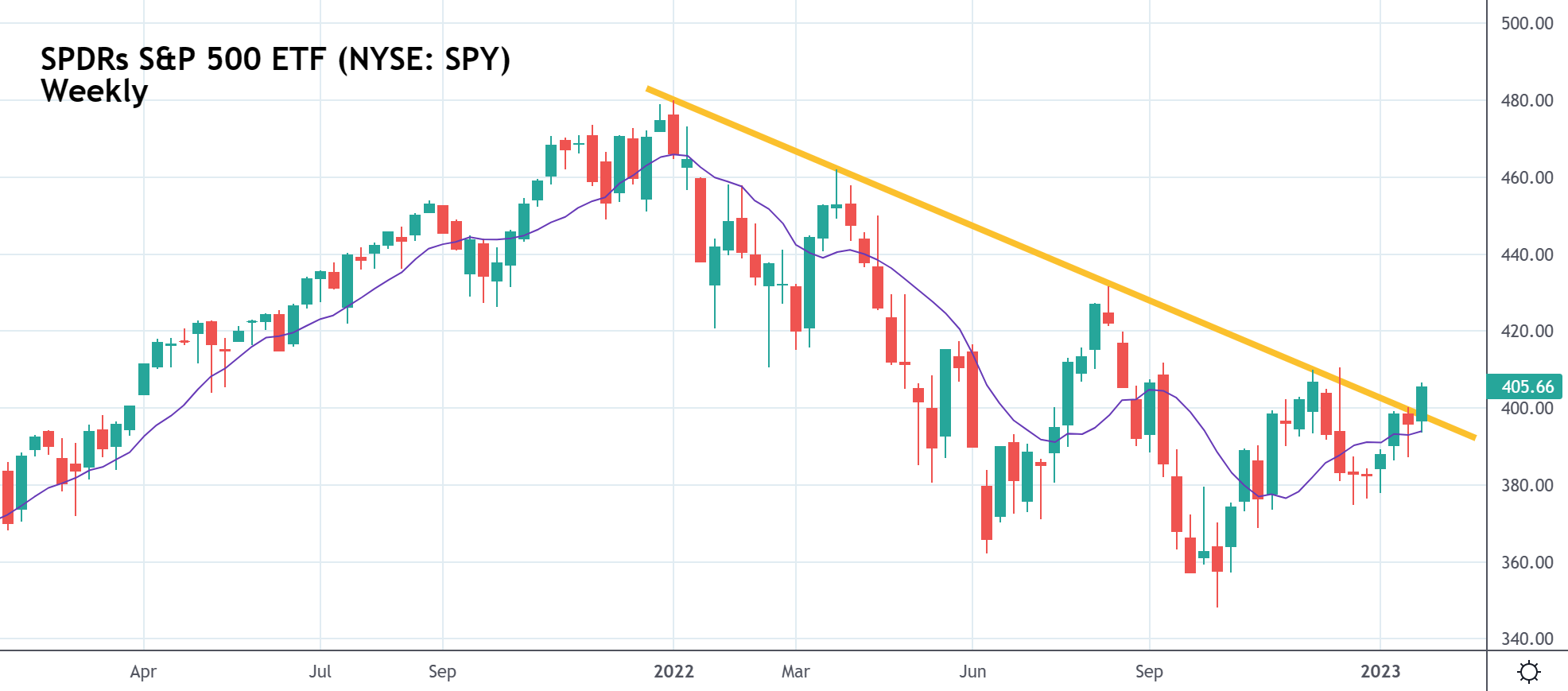Stocks gained slightly through noon today despite opening lower in response to horrific Intel (NASDAQ: INTC) earnings and guidance. The Nasdaq Composite led the way as the S&P and Dow followed closely behind. Should the S&P hold on to its gains, it will have finally broken out past its long-term bearish trendline – something the index has been unable to do for months.

The S&P would need to confirm that breakout by continuing its climb next week. But for the time being, this is a momentous occasion for bulls.
Intel shareholders, however, aren’t feeling the love following the chipmaker’s disastrous quarterly results. Intel reported a 32% year-over-year decline in revenue and a net loss of $664 million in Q4. That caused a major EPS miss ($0.10 reported vs. $0.20 expected) and the company expects things to get even worse.
Intel warned shareholders that its anticipated EPS for the upcoming quarter is an adjusted loss of 15 cents per share vs. an expected gain of 25 cents.
“No words can portray or explain the historic collapse of Intel, with management attempting to blame a worst-ever PC inventory digestion dynamic and macro/China/enterprise to an over 20% q/q decline in sales,” said Rosenblatt analyst Hans Mosesmann.
INTC plunged 10% at the open before paring back its losses.
Offsetting the Intel carnage was the Fed’s favorite inflation indicator, the core PCE deflator, which printed right in line with expectations at +4.4% year-over-year. That’s down from last month’s print of +4.7%.
Consumer spending also declined (-0.20% month-over-month), though, badly missing the consensus estimate that predicted a monthly gain (+0.20%). That marks the second straight monthly drop in consumer spending.
Inflation may be falling, but cratering spending trends suggest a “soft landing” for the US economy may be a pipedream.
“Even if real consumption returns to growth over the first few months of this year, the disastrous end to the previous quarter means that first-quarter real consumption growth will be close to zero,” said Capital Economics’ Paul Ashworth.
Ashworth estimates a -1.5% year-over-year decline when the Q1 2023 GDP figure is released.
Overall, though, the data was received as good news due to a falling core PCE deflator. But will that result in additional market gains? One Wall Street analyst told bulls to be careful here as the market finds itself in a familiar situation.
“So far, price action in January 2023 bears an eerie resemblance to that in July 2022, when risk assets rallied and rates fell as investors bought into the idea of a ‘soft landing,'” wrote Blackrock strategist Gargi Chaudhuri.
“That argument faded and price action reversed as the Fed held firm and went on to hike policy rates by 75 basis points in September. We think, just as in July 2022, that markets are misreading the outlook for inflation.”
Still, without an inflation resurgence (or just persistently sticky inflation), bulls will have their work cut out for them. The current rally is looking very long in the tooth after many weeks of strong gains. Yes, the S&P is staging a breakout, but it will need to rise mightily again next week to confirm it.
And, with a Fed meeting rapidly approaching, the market could easily get slammed lower again, even if Powell unveils a 25 basis point hike as expected.









